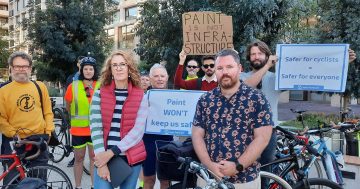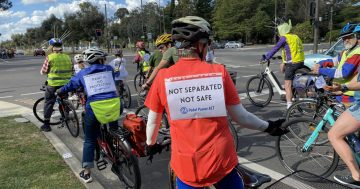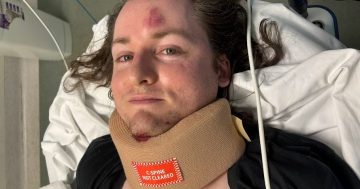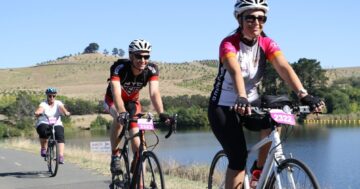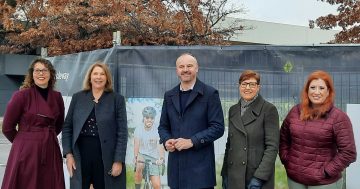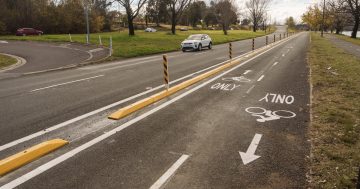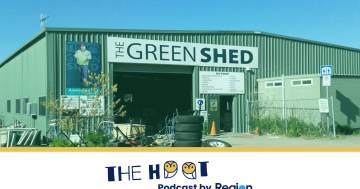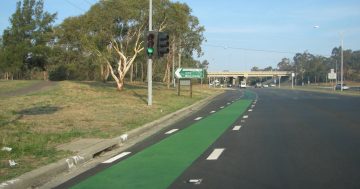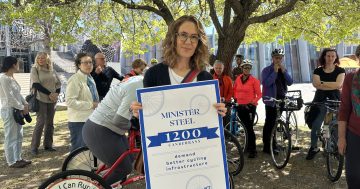
Commuters were encouraged to ride their bikes or scooters to work during the Make the Move campaign. Photo: Michelle Kroll.
I think we all know the ACT Government wants to get us out of our cars.
And fair enough, too. We’d all be fitter and healthier (and possibly have more money in our wallets) if we used our cars less.
Mid-century urban design decisions were all predicated around car usage and now, as we face transitions away from fossil fuels, we’re stuck with the consequences of a spread-out city that’s still overly reliant on motor vehicles.
This will always be a problem: unlike larger, more densely packed cities in Europe and Asia, most of us can’t walk, cycle or catch public transport everywhere, all the time.
In its efforts to prise us out from behind the wheel, the government is rapidly eradicating above ground car parking – and again, fair enough. They’re a waste of valuable space in town centres.
But where is the recognition that if you remove the support structures for cars, you need to replace them with something else that facilitates people’s everyday lives?
The Canberra Symphony Orchestra’s Symphony in the Park was a case in point: hundreds who were encouraged to leave their cars elsewhere were completely stranded when buses failed to materialise late at night.
Events ACT shrugged its shoulders and said people should have checked the timetables before making their plans, despite buses frequently being laid on for other late night events.
Advocacy group Pedal Power has made a strong point this week about the promised separated cycleways on Northbourne Avenue from the 2018 City and Gateways Urban Design Framework.
These have quietly disappeared from the latest Active Travel Plan. Pedal Power is querying what responsibility the government has for cyclists who may be seriously injured or even killed as a result of notably poor cycling infrastructure on arterial roads.
They say the government has a moral responsibility to provide better facilities and follow through on their promises if they want us to drive less.
Anyone who travels on Northbourne Avenue regularly knows that a line on the road offers no magical protection to the many peak hour cyclists.
Just a few days ago I saw a very slow cyclist being overtaken by a faster one who veered into the path of oncoming traffic, while at the Macarthur Avenue traffic lights, a car waiting to turn left had completely blocked the cycle lane.
Separated cycle paths on major roads would significantly enhance safety and surely cost less than the decades-long project to get light rail around the entire city.
The ACT’s budget is always tight, but if we are serious about an investment in active travel in a city where many people are already keen cyclists, it can’t be impossible to make it safer and easier for commuters.
A reasonable starting point would be to ensure that our political leaders walk the talk on active travel themselves.
In The Hoot podcast this week, my co-host David Murtagh made the point that most senior politicians and ACT public servants still have allocated parking spaces as part of their job entitlements.
Should those entitlements be removed? Should the parking spaces be returned to the general public?
And would senior pollies be more alert to these problems if they had to duck out every now and then to feed the meter, or work out how to get home without a car late at night?
If decision-makers are going to pursue generally worthwhile aims, perhaps they should have to face the same battles as the rest of us while they’re doing so.












